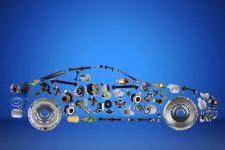5 Useful Tips for Electric Vehicle Maintenance

Electric vehicles (EVs) offer lots of advantages over ‘traditional’ cars and vans. While people know that EVs are better for the environment and cheaper to run compared to the cost of petrol or diesel, many aren’t aware of the other benefits. Like being liable for less tax for example.
One of the other main advantages of an EV is that they are mechanically much simpler, meaning there’s less that could go wrong. However, they do still have mechanical and electrical components that can suffer wear and tear and benefit from regular upkeep.
With this in mind, let’s dive into the main things you need to know about EV maintenance. Here are five helpful tips to ensure you’re looking after your electric car properly.
Electric vehicle (EV) maintenance tips
EVs don’t need servicing at the same intervals as ‘regular’ vehicles, but like any car, it’s crucial to undertake ongoing maintenance.
Firstly, it’s vital as a responsible motorist that the vehicle you’re driving is safe for use on the road. Secondly, EVs are state-of-the-art vehicles that cost significant amounts of money, and it’s important to protect your investment. For those leasing EVs, keeping the car in good condition is vital to avoid additional charges at the end of your lease period.
Wear and tear is part of motoring. Small scratches and bumps should be covered in your 'fair wear and tear' policy. These guidelines are used to assess your vehicle when you return it. However, any damage that falls outside of this will incur a charge. Examples of damage you might have to pay for are things such as collision damage, sticker residue, windscreen cracks and interior tears.
As with all vehicles, EVs still require an annual MOT after three years. However, they do not need to undergo an emissions and noise test as part of this process. Even during this 3-year period, it’s good practice to regularly check the condition of the tyres, brakes and battery.

1. Battery health
Battery health is one of the most critical elements of an EV. It’s also one of the most expensive parts to replace should you need to, so it’s vital that you keep your battery in good health. Fortunately, there are some simple things you can do:
-
Don’t let your EV battery run flat. EV batteries are not designed to run completely flat. To avoid damaging your battery (and being stuck somewhere!), most manufacturers recommend not allowing the state of charge to drop below 20%.
-
Check your charger cable. Regularly inspect your charger cable for damage to ensure it functions correctly. Check the connectors and the external insulation for nicks and creases. Should you need to, you can also get your cable tested to ensure it transfers power correctly and efficiently.
-
Always charge according to the owner’s manual. When you take delivery of your EV, read the owners’ manual and make sure you stick to their advice regarding recharging. Failing to do so could damage the battery and potentially invalidate any warranty.
2. Brake maintenance
It’s vital that the brakes of your EV are maintained. Many use regenerative braking, which increases efficiency and can reduce the wear on the ‘traditional’ hydraulic system. Many EVs are also capable of high performance and therefore need to be able to stop quickly.
Regenerative braking, sometimes called regen, uses the kinetic energy of the car to recharge the battery. When your foot comes off the accelerator, the system switches the electric motor from deploy mode to charging mode, utilising energy that would otherwise be lost.
The easiest way to think of this is like an old-fashioned dynamo on a push bike. Resistance is applied to the wheels (or, in this case, the motor), which then slows the car and powers the battery. When braking hard, the hydraulic system of discs and pads will also kick in.
-
Check the brake pads and discs regularly. Due to the regen, EV brakes can be used less than in a regular car. Conversely, this makes it more important to maintain them as they can sit idle for longer. Check the brake discs and pads for rust. If you hear squealing when you brake hard, they may need attention. A special brake cleaner can be bought for this purpose.
-
Change the brake fluid regularly. Check your manual for guidance on how often you should change the fluid, but many experts recommend every two years. Brake fluid will degrade over time when not used as often.
3. Check coolant levels
EVs need coolant like traditional cars, but in this case, they need it to manage battery temperatures. Again, failure to keep the battery temps in check may cause lasting damage, or worse, a fire.
-
Check coolant levels. Consult your manual and check your coolant levels regularly to ensure they’re correct. If they’re low, they’ll need topping up. However, unlike a traditional vehicle where you can just top the radiator up, EV cooling systems are often sealed and will require a qualified technician.
4. Tyre wear and tear
The tyres of any vehicle are vital. They transmit the power, provide the grip when cornering or in inclement weather, and help slow the car down when braking. So just like any car, they must be kept in good condition.
EVs often use low-rolling resistance tyres to increase efficiency and range. While this means that they wear out slower than ‘traditional’ car tyres, they’re also more expensive to replace.
-
Check your tyre pressures. Maintaining the correct tyre pressures is vital for both grip and longevity. Consult your manual and check them regularly. If needed, top them up.
-
Check the tread depth and sidewalls. As with any car, it’s important from a legal and safety standpoint that the tyres have sufficient tread depth. Check them regularly. At the same time, it’s worth looking over the sidewalls and the tyre surface for any cuts or gouges.
-
Rotate the tyres. In most cases, the front tyres wear faster than the rear. Even with RWD or 4WD drive vehicles, the fronts have to do most of the braking as well as the steering. Rotating the wheels from front to rear will help ensure that tyre wear is evenly spread.
5. Windscreen checks
As with any car, the windscreen is vital and must be kept in good condition. Any cracks or chips that are within the driver’s eye line need to be fixed immediately. These would be an MOT fail and represent a safety risk.
Small cracks should also be fixed. Cracks and chips can easily get bigger and may cause the entire windscreen to need replacing. Any car found to be driven on the road in a dangerous condition is against the highway code, and the driver could be liable for a fine and 3 points on their licence.
-
Check for windscreen damage. Inspect the whole windscreen looking for cracks and chips. If you find any, it’s cheaper to fix them quickly rather than risk additional costs later.
-
Check washer fluid is topped up. You need to be able to clean your windscreen while driving, so ensure the washer fluid bottle is always topped up.
-
Check the wipers are clean and working. A damp cloth is usually all you’ll need to clean a wiper blade. If the rubber shows any signs of cracking and perishing or the blade shudders over the screen when in use, replace the wiper blade.
Maintaining commercial vehicles
As with personal cars, it’s just as important, if not more so, to check commercial EVs regularly and ensure they receive the correct maintenance. Alongside potentially hefty repair bills, commercial EVs that are off the road mean that organisations can’t go about their business and could lose money.
In addition to all the checks we’ve outlined above, it’s vital to properly maintain any extra mechanisms on the vehicle. For example, refrigeration systems lifts for vans and minibuses, tipper beds and more.
What are the benefits of leasing an electric vehicle?
One of the main benefits of leasing an EV is that they tend to have a high initial purchase price. This is due to the vehicles still being quite new, and the technology is continuing to evolve. By leasing, you can drive a brand-new, state-of-the-art vehicle of your choice for an affordable monthly price, with low monthly running costs.
When leasing an EV there’s no long-term commitment either. After your lease period ends (typically 2-4 years), you can return it and take out a fresh agreement for a new vehicle. This means that maintenance costs are often low as you’re continually driving a new car, which is less likely to go wrong.
As electric vehicle technology continues to evolve, a lease agreement allows you to reap the benefits of the latest tech without having to sell your existing car with the associated hassle and depreciation.
Rivervale offer a range of benefits to our customers, including
-
Manufacturer's warranty and road tax are included in most deals
-
No depreciation costs, hidden fees or admin charges
-
A wide variety of EVs to choose from
-
Free UK delivery to your home or work
-
Monthly price fixed for your peace of mind
For more information about our EV leasing service, read our EV Leasing Guide.
EV Maintenance packages
Many of our EV leasing deals can also include a maintenance package, generally, maintenance covers all of your servicing costs, maintenance costs and replacement tyres (in some cases, this even includes punctures). If your chosen contract is longer than 36 months in duration, this would also cover the cost of your first MOT.
Simply book your vehicle with your local main dealer and let them know it has a full maintenance agreement. When the car is serviced, the invoice will be passed onto the leasing company for payment.
If leasing an electric vehicle sounds like a good option for you, get in touch with our team today or request a call back to find out more information.







